
Above: The most famous myth about the founding of Rome, is the story of Romulus and Remus, the twins who were suckled by a she-wolf. They decided to build a city, but after an argument, Romulus killed his brother. This statue of them is found on Capitoline Hill.
Rome is the capital of Italy and with 2.8 million residents, it is also the country's largest. The city is located in the central-western portion of Italy, on the Tiber River and its history spans more than two and a half thousand years, since its founding in 753 BC, with the union of rural villages. It was the capital city of the Roman Empire, which was the dominant power in Western Europe for over seven hundred years from the 1st century BC until the 7th century AD and the city is regarded as one of the birthplaces of western civilization.
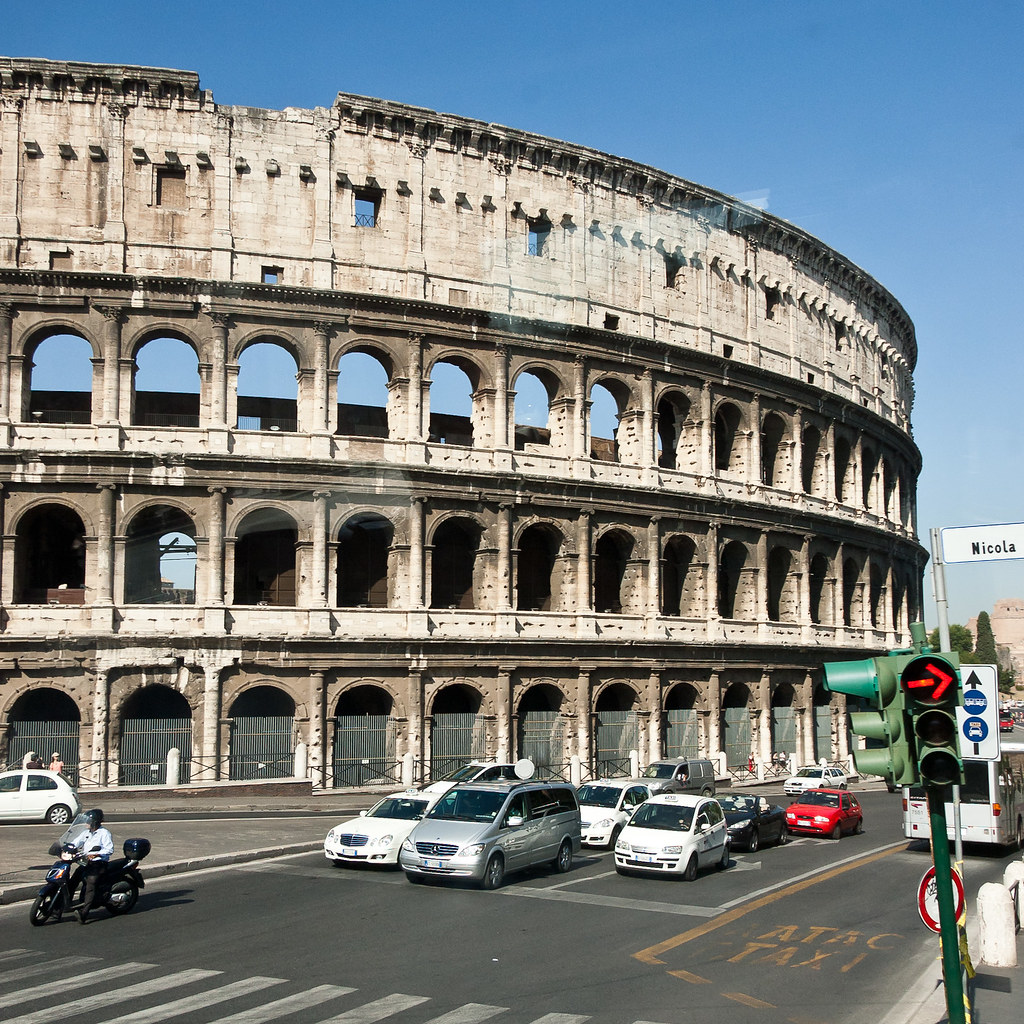
Above: The famous Coliseum. More about this including a look inside later!
The tours which I went on were a combination of driving around the city, guided walks of major sites (such as Saint Peter's Basilica and the Collesium) as well as some free time to explore other parts of Rome. There is so much to see and do and many of the places we visited, we only spent a short amount of time there. On the two times I visited, the city was very crowded with lots of tourists and this combined with the proximity between famous sites (and the heat) made Rome a far more intense experience then other major cities I have visited like Berlin and Paris.
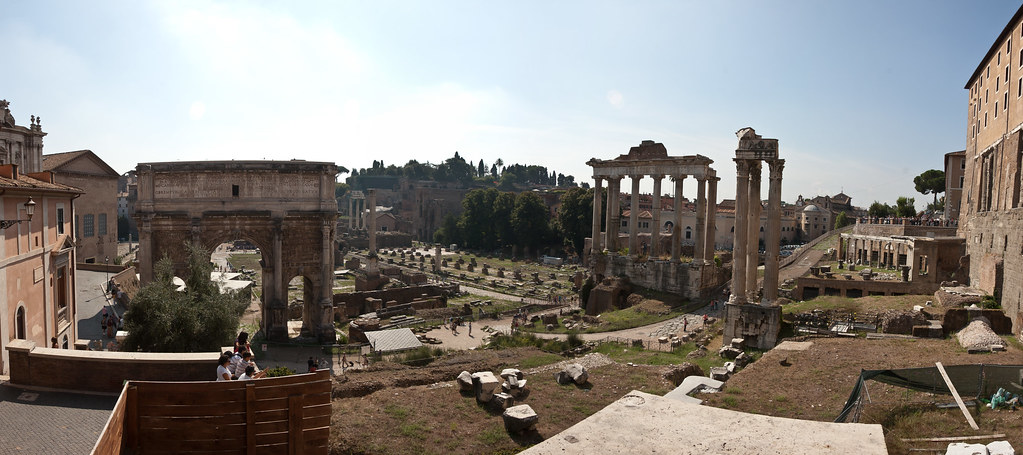
Above: The Roman Forum (see below).
One of the most famous of the many, many ruins in Rome is the Roman Forum, a rectangular plaza surrounded by the ruins of several important ancient government. It was for centuries the centre of Roman public life and has been called the most celebrated meeting place in the world, and in all history: the site of processions and elections, venue for public speeches, criminal trials, and gladiatorial matches. Located in the small valley between the Palatine and Capitoline Hills, the Forum today is a sprawling ruin of architectural fragments attracting numerous sightseers. Unfortunately we only had time to gaze out over the vast plaza but when I return to Rome, this would be one of the places I would like to explore.
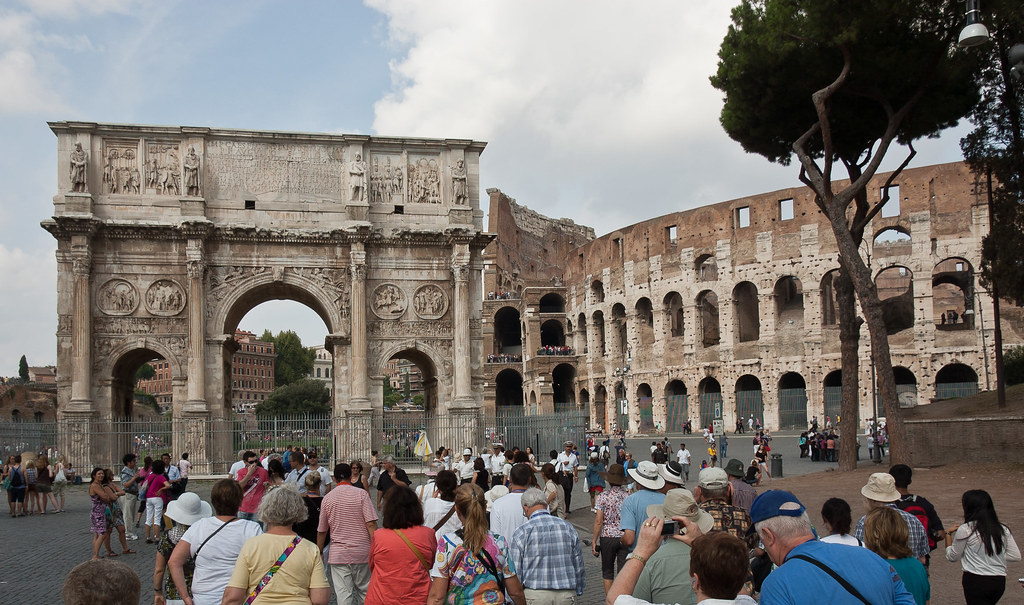
Above: The Arch of Constantine with the Coliseum to the right.
Let's jump straight in with the most iconic sight in Rome - the Coliseum! Also spelt 'Colosseum', it is an elliptical amphitheatre, the largest ever built in the Roman Empire, built of concrete and stone. It is considered one of the greatest works of Roman architecture and Roman engineering. Occupying a site just east of the Roman Forum (see above), its construction started in 72 AD under the emperor Vespasian and was completed in 80 AD under Titus, with further modifications being made during Domitian's reign (81–96).
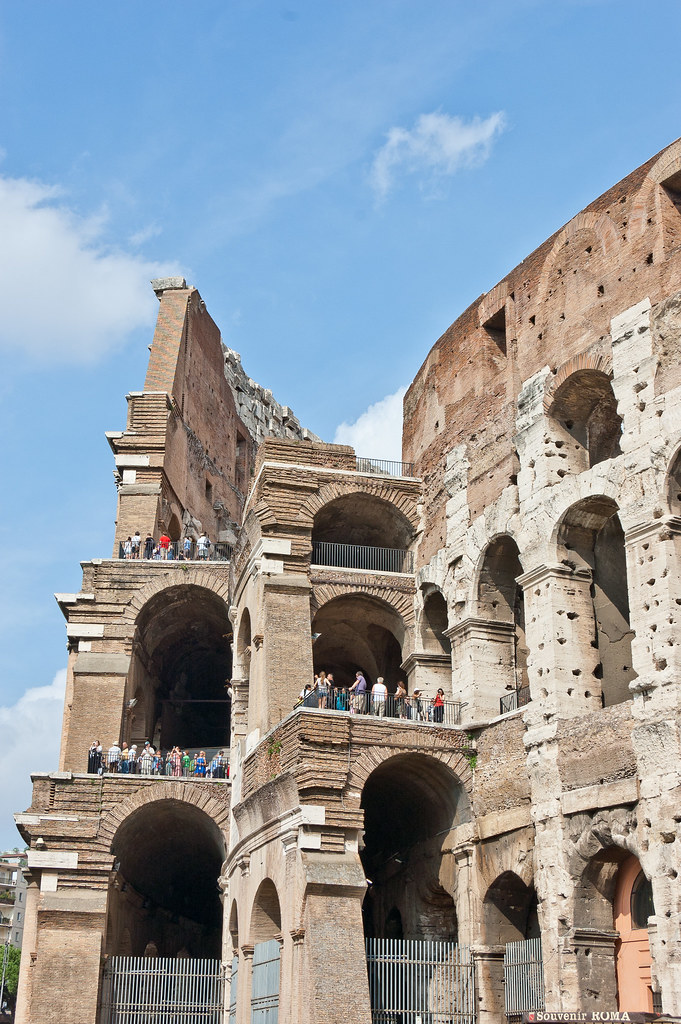
Above: The inner wall and outer wall meet at a cross-section of the Coliseum.
Capable of seating 50,000 spectators, the Coliseum was used for gladiatorial contests and public spectacles such as mock sea battles, animal hunts, executions, re-enactments of famous battles, and dramas based on Classical mythology. The building ceased to be used for entertainment in the early medieval era. It was later reused for such purposes as housing, workshops, quarters for a religious order, a fortress, a quarry, and a Christian shrine.
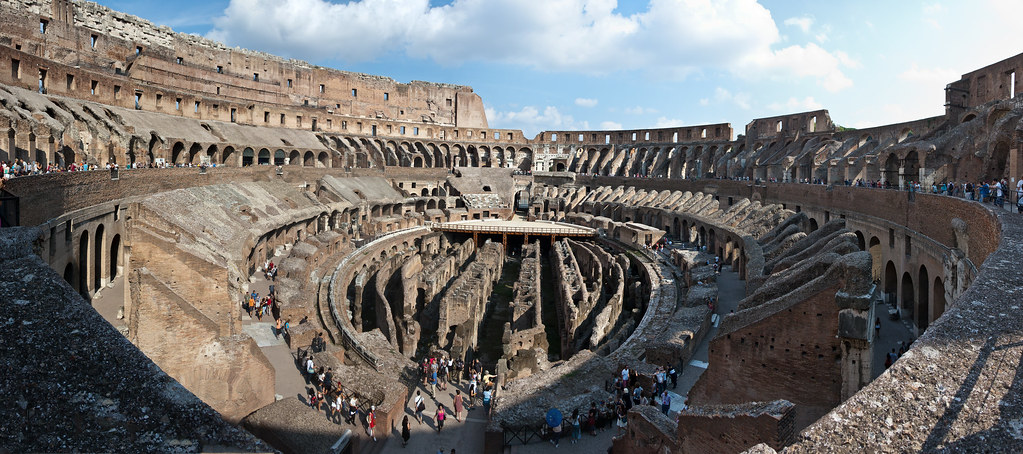
Above: A panoramic shot of the inside of the Coliseum.
Visiting the Coliseum was an interesting experience. I listened to Hans Zimmer's 'Gladiator' soundtrack whilst walking around inside which was very powerful but I was also a little disappointed that the Coliseum was not quite as huge or majestic as its portrayal in Ridley Scott's movie. In fact, during its heyday, it was and today the structure is partially ruined because of damage caused by devastating earthquakes and stone-robbers.
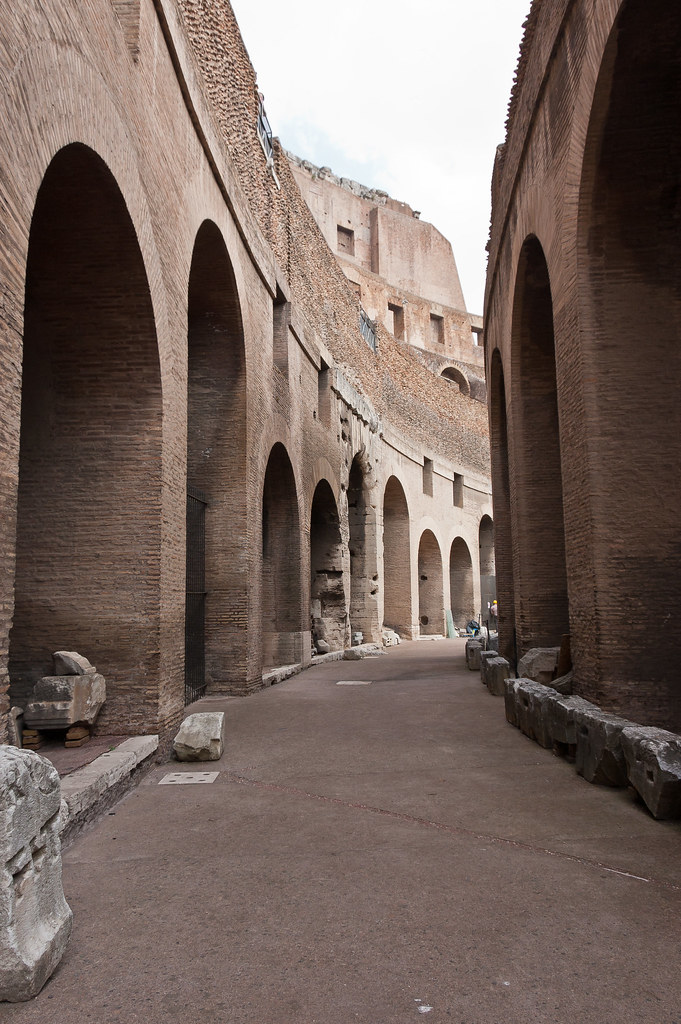
Above: Passages such as these run around the Coliseum, dividing the tiered seating which was very important in separating the different classes of Roman citizens.
I was also initially perplexed by the arena area itself (where is the flat sand covered oval?!) until it was explained to me that the wooden floor covered by sand had rotted away, leaving the elaborate underground structure known as the hypogeum exposed. Literally meaning 'underground', the hypogeum consisted of a two-level subterranean network of tunnels and cages beneath the arena where gladiators and animals were held before contests began. Eighty vertical shafts provided instant access to the arena for caged animals and scenery pieces concealed underneath; larger hinged platforms, called hegmata, provided access for elephants and the like.

Above: Arches and alcoves surrounding the arena.
Despite its damaged state, the Coliseum is an iconic symbol of Imperial Rome. It is one of Rome's most popular tourist attractions and still has close connections with the Roman Catholic Church, as each Good Friday the Pope leads a torchlit "Way of the Cross" procession that starts in the area around the Coliseum.
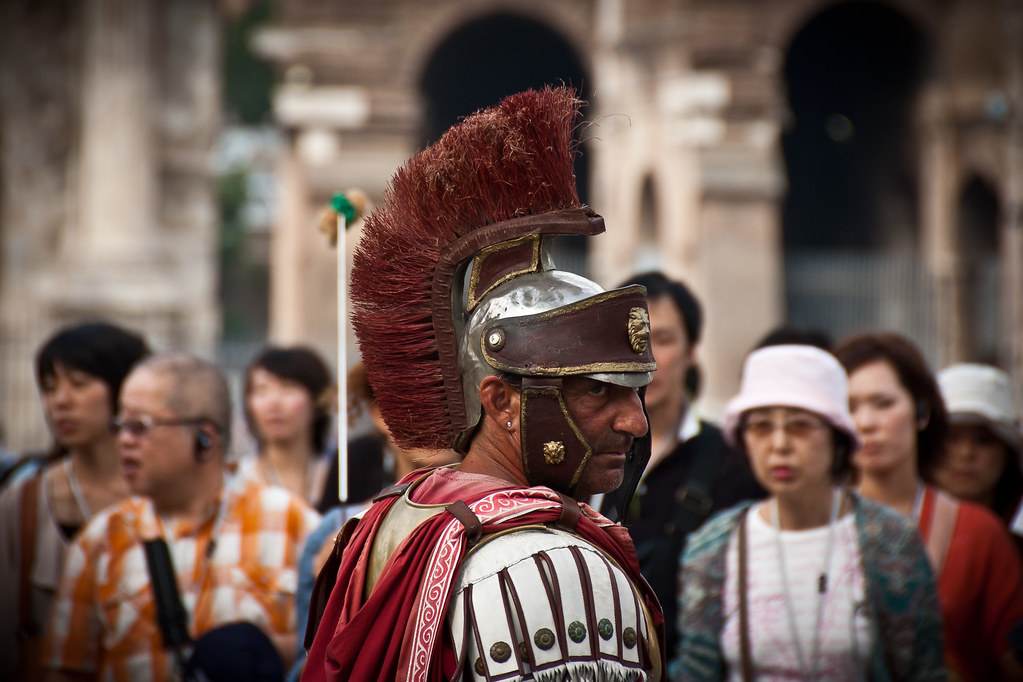
Above: Locals dressed as soldiers making lots of money charging people for photos!
If the Coliseum is the most famous sight in Rome, the Trevi Fountain can't be far behind. Standing 26.3 metres high and 49.15 metres wide, it is the largest Baroque fountain in the city and one of the most famous fountains in the world.
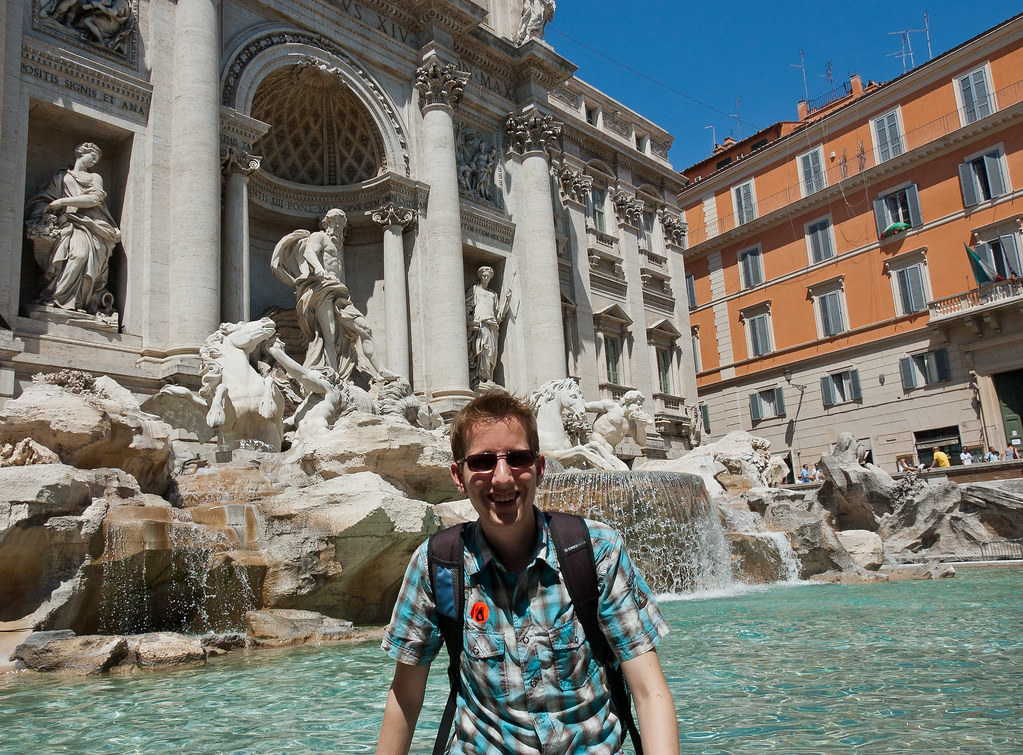
Above: Yours truly at the Trevi Fountain. Thanks for Madeline, my escort buddy for the pic!
Work began in 1732, and the fountain was completed in 1762. A traditional legend holds that if visitors throw a coin into the fountain, they are ensured a return to Rome. An estimated 3,000 euros are thrown into the fountain each day and the money has been used to subsidize a supermarket for Rome's needy; however, there are regular attempts to steal coins from the fountain.

Above: A better shot of the Trevi Fountain.
Close by to the Fountain, are the Spanish Steps, another fairly well known attraction in central Rome. It is the widest staircase in Europe and climbs a steep slope between the Piazza di Spagna at the base and Piazza Trinità dei Monti, dominated by the Trinità dei Monti church at the top. It was built in 1723 and the 1953 film Roman Holiday, starring Audrey Hepburn and Gregory Peck, made the Spanish Steps famous to an American audience.
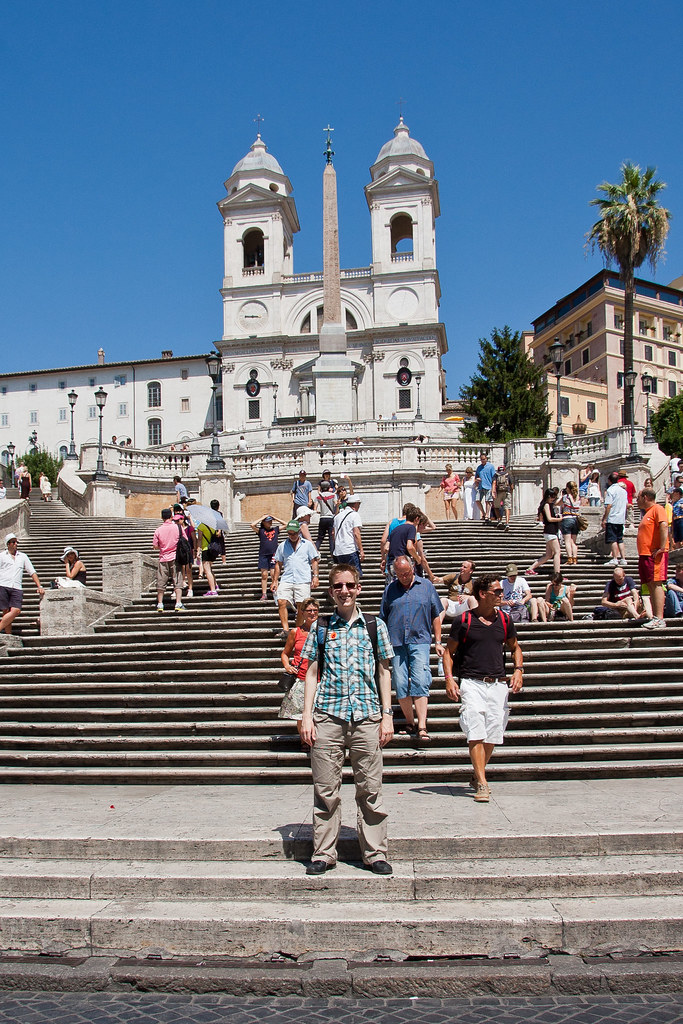
Above: Standing on the Spanish Steps.
On one of our walking tours of the city, we also visited the Pantheon - another well known landmark. The Pantheon was commissioned by Marcus Agrippa as a temple to all the gods of Ancient Rome, and rebuilt by Emperor Hadrian in about 126 AD. A rectangular vestibule links the porch to the rotunda, which is under a coffered, concrete dome, with a central opening to the sky. Almost 2000 years after it was built, the Pantheon's dome is still the world's largest un-reinforced concrete dome and the building is one of the best-preserved of all Roman structures. It has been in continuous use throughout its history, and since the 7th century, the Pantheon has been used as a Roman Catholic church dedicated to "St. Mary and the Martyrs".
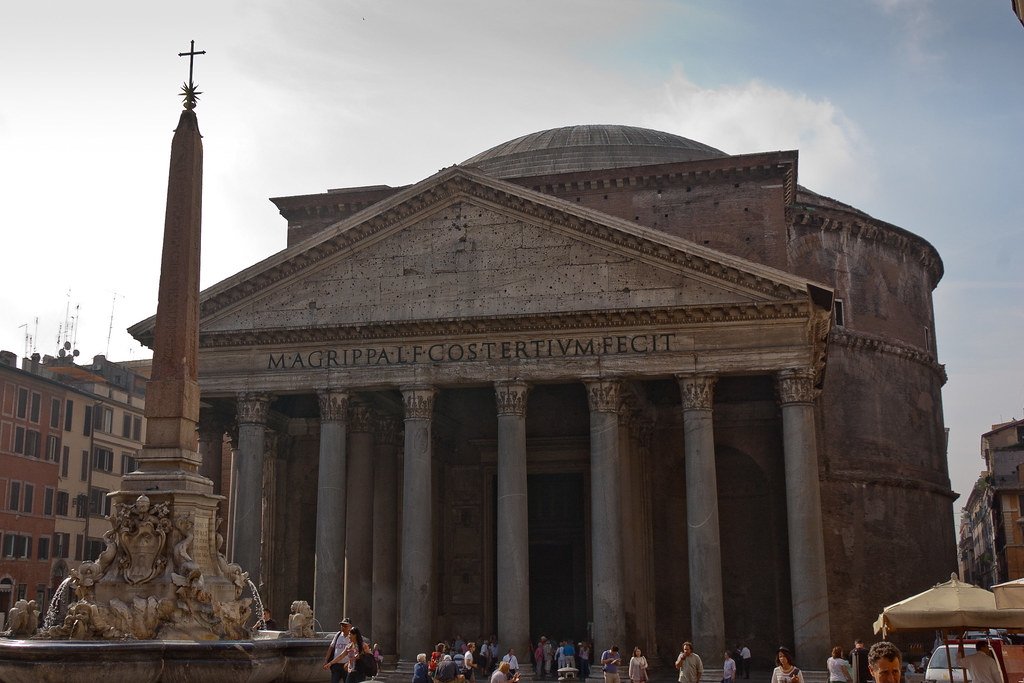
Above: The Pantheon, rebuilt in 126 AD.
I will bring you full circle now, back to Capitoline Hill (where the Romulus and Remus statue is found), one of the seven hills of Rome. It was the citadel (equivalent of the ancient Greek acropolis) of the earliest Romans. The Capitoline contains few ancient ground-level ruins, as they are almost entirely covered up by Medieval and Renaissance palaces (now housing the Capitoline Museums) that surround a piazza, a significant urban plan designed by Michelangelo.
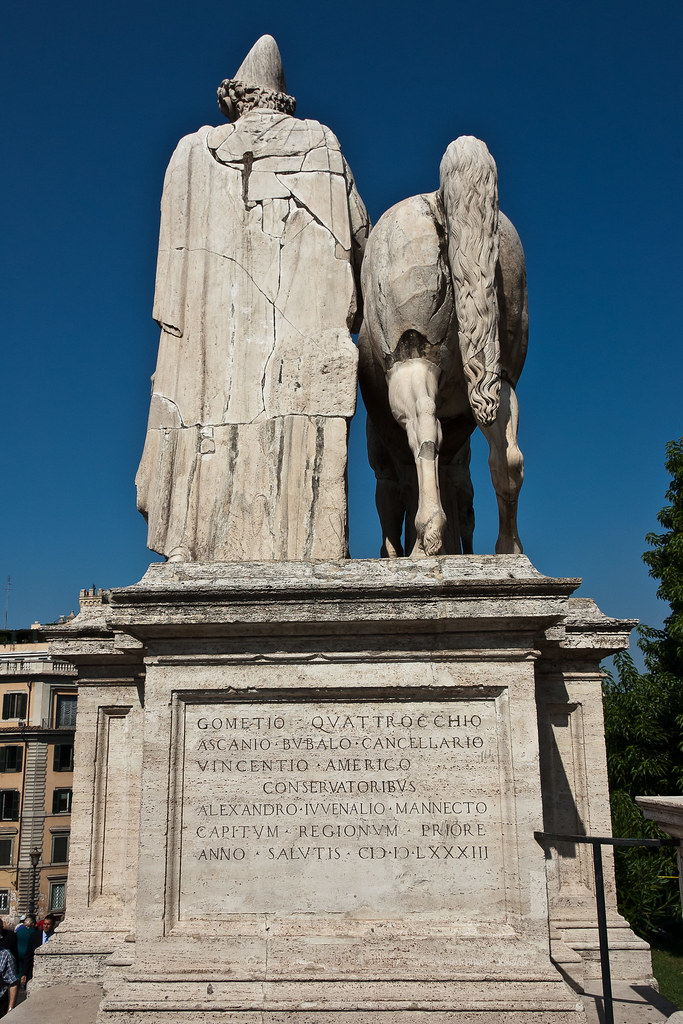
Above: Horse and rider guard the entrance to the Capitoline Hill.
At the foot of the hill is the Monumento Nazionale a Vittorio Emanuele II built in honour of Victor Emmanuel, the first king of a unified Italy. Designed by Giuseppe Sacconi in 1885, it was inaugurated in 1911 and completed in 1925.The monument is built of white marble and features stairways, Corinthian columns, fountains, an equestrian sculpture of Victor Emmanuel and two statues of the goddess Victoria riding on quadrigas. The structure is 135 m wide and 70 m high.
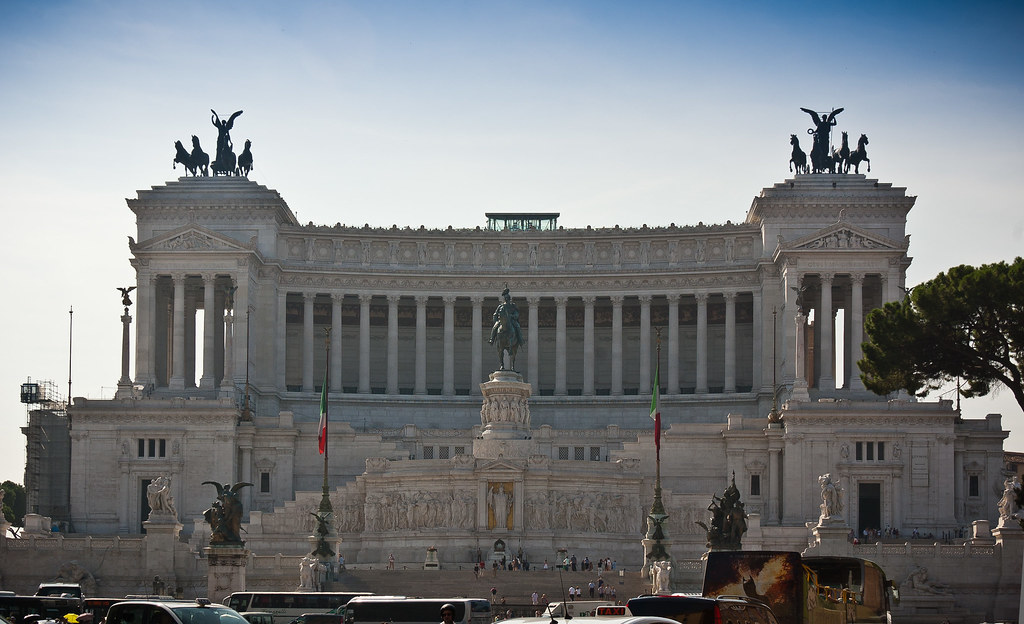
Above: Monumento Nazionale a Vittorio Emanuele II
I will never forget my time in Rome and I hope to go back there to spend more time in the Eternal City one day. Thanks for reading and I'll be back soon with a look at the Vatican and Saint Peter's Basilica!

Peter, your pictures of Rome are great! :)
ReplyDeletei lived there for 3 months and looking at yr post does make miss Rome quite a bit. thanks for sharing! hooray that i get to live vicariously through you! haha